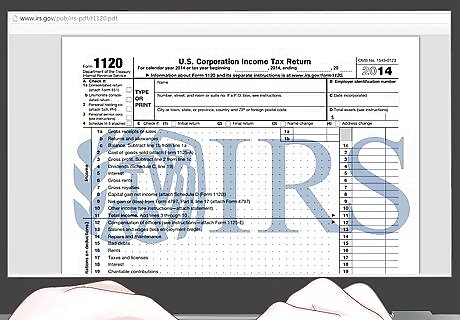
views
Creating a Sole Proprietorship

Consider writing a business plan. A business plan details how your business will run. While this step is not required to operate a sole proprietorship, it will help you to plan your business.

File for a “Doing Business As” (DBA) Certificate. If you wish to conduct business under a name that is not your own, you must obtain a certificate to do so. You may file for a DBA at your local county clerk’s office building by filling out a form and paying a fee. If you are doing business under your given name (not giving your business a separate name) you do not need a DBA.

Begin conducting business. As a sole proprietor, your business does not technically exist from a legal standpoint, and therefore you need not file any paperwork to get it started.

Report your business profits and losses on your personal tax return.
Creating a Limited Liability Company (“LLC”)

Consider writing a business plan.

File organizational documents with your state. Not all states offer the LLC as a business entity, so be sure to check with your state’s Department of State before deciding on this structure. Then determine which documents you will be required to file. Generally the documents include Articles of Organization and some states may also require you to publish notice of your business formation in local newspapers. You will also likely have to pay a fee.

Draft and adopt an Operating Agreement. An operating agreement is generally an internal document that is not filed with the state, however you may be required to have one by your state. Even if not required, it is a good idea to draft an operating agreement because it details exactly how your business will run, from the type of business you decide to operate to handling payroll and who will receive what share of profits and losses.

Operate your business.

Report your business profits and losses on your personal tax return.
Creating a Corporation

Choose a name for your corporation. States generally place restrictions on the words that may or may not be used in the name of a corporation. Generally the name must include the word ‘incorporated’ or ‘inc.’ or some other indicia that the business is a corporation.

Determine who will be the initial directors of the corporation. The initial board of directors is composed of those individuals in charge of getting the corporation up and running. They will authorize the issuance of stock and pick officers of the corporation, two of the most important decisions the corporation will make.

File incorporation documents with your state. These are usually called articles of incorporation and are generally accompanied by a filing fee. Your state’s secretary of state or department of state office will likely have an approved form that you may fill out or you may draft your own. Articles of incorporation generally include the name of the corporation, its address, and the name and contact information for a person to whom members of the public can contact regarding that corporation.

Draft corporate bylaws. These are analogous to the operating agreement that an LLC operates under. Corporate bylaws will include additional information such as how shares of stock will be voted, how directors are chosen, etc. Usually you may use a template for the bylaws or draft your own.

Hold an initial board meeting and adopt the bylaws. At this meeting the initial board of directors will adopt the bylaws, elect officers, authorize the issuance of stock, and determine how to handle certain financial or tax issues such as the corporation’s fiscal year.

Issue shares of stock. In order to officially be a corporation you must issue stock, as this formalizes the division of the ownership of the business.
Creating a Subchapter S Corporation

Form a corporation. Since a Subchapter S Corporation is a tax election that a corporation makes, the first step to creating an S Corporation is to create a corporation. Follow the steps outlined above.

File Form 2553 with the IRS. The form is available on the IRS website.

Approve the S Corporation tax election at the initial board meeting. There must be unanimous consent by the board in order to make the S Corporation tax election.



















Comments
0 comment